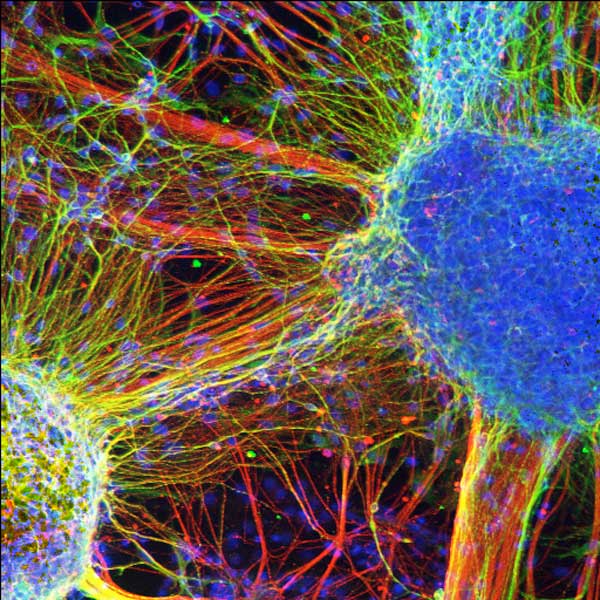
Some so-called jumping genes that copy and paste themselves throughout the genome may be linked to schizophrenia, new research suggests.
The new study, published today (Jan. 2) in the journal Neuron, suggests these jumping genes may alter how neurons (or nerve cells in the brain) form during development, thereby increasing the risk of schizophrenia, study co-author Dr. Tadafumi Kato, a neurobiologist at the RIKEN Brain Science Institute in Japan, wrote in an email.
Jumping genes, or retrotransposons, are mobile genetic elements that copy and paste themselves at different places throughout the genome. About half of the human genome is made of these mysterious elements, compared with the 1 percent of genes that actually code for making proteins, Kato said.
Earlier studies had found that a certain type of jumping gene, known as long interspersed nuclear element-1 (LINE-1), was active in human brain cells. Kato and his colleagues wondered whether they might play a role in mental illness. [Inside the Brain: A Photo Journey Through Time]
To find out, the team conducted a post-mortem analysis of 120 human brains, 13 from patients who had been diagnosed with schizophrenia.
LINE-1 link
The team found a higher number of LINE-1 copies in the brains of schizophrenics compared with other groups.
Sign up for the Live Science daily newsletter now
Get the world’s most fascinating discoveries delivered straight to your inbox.
The team also found that stem cells derived from the brains of people with schizophrenia had a higher concentration of LINE-1 genes than did those from people without the diagnosis. (Stem cells are body cells that haven't yet become specialized into, for example, skin or liver cells, and have the capability to develop into any tissue in the body.) Mice and primates with inflammation meant to mimic schizophrenia, introduced by the researchers, also had more of these movable genetic elements than healthy animals.
The team also found that in people with schizophrenia, LINE-1 concentrations were increased near genes associated with psychiatric disorders that control how neurons in the brain communicate with one another.
The findings suggest these LINE-1 segments may be inserting themselves into genes critical for brain development. When triggered by genetic and or environmental factors, they may alter that brain development, leading to schizophrenia, Kato said.
'Very convincing' findings
The findings are "very convincing," because the team used so many different methods to tie the jumping genes to schizophrenia, Alysson Muotri, a neurobiologist at the University of California at San Diego, who was not involved in the study, told LiveScience an email.
Still, the study can't say whether these genes actually cause schizophrenia, only that there is a link between the two, Muotri said.
And LINE-1 genes may actually serve some beneficial purpose for people, he said.
"LINE-1 retrotransposition may be a mechanism to generate cognitive diversity in the human population," Muotri said. "This mechanism may have evolved to create outliers in the population, people with extraordinary abilities. On the other hand, the other end of the spectrum may be patients with schizophrenia or autism."
Follow Tia Ghose on Twitter and Google+. Follow LiveScience @livescience, Facebook & Google+. Original article on LiveScience.

Tia is the managing editor and was previously a senior writer for Live Science. Her work has appeared in Scientific American, Wired.com and other outlets. She holds a master's degree in bioengineering from the University of Washington, a graduate certificate in science writing from UC Santa Cruz and a bachelor's degree in mechanical engineering from the University of Texas at Austin. Tia was part of a team at the Milwaukee Journal Sentinel that published the Empty Cradles series on preterm births, which won multiple awards, including the 2012 Casey Medal for Meritorious Journalism.









